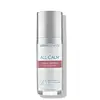Colorescience All Calm Clinical Redness Corrector SPF 50 PA++++ Versus Colorescience Sunforgettable Total Protection Color Balm SPF50 PA++++
What's inside
What's inside
 Key Ingredients
Key Ingredients

 Benefits
Benefits

 Concerns
Concerns

 Ingredients Side-by-side
Ingredients Side-by-side

Titanium Dioxide 11.6%
Cosmetic ColorantZinc Oxide 8.6%
Cosmetic ColorantCyclopentasiloxane
EmollientCaprylic/Capric Triglyceride
MaskingDimethicone Crosspolymer
Emulsion StabilisingWater
Skin ConditioningNiacinamide
SmoothingDimethicone/Vinyl Dimethicone Crosspolymer
Skin ConditioningDisteardimonium Hectorite
StabilisingPropylene Carbonate
SolventDisodium Lauriminodipropionate Tocopheryl Phosphates
CleansingCrithmum Maritimum Extract
Skin ConditioningMagnolia Officinalis Bark Extract
AntimicrobialZingiber Officinale Root Extract
MaskingMagnesium Carboxymethyl Beta-Glucan
Skin ConditioningJojoba Esters
EmollientBisabolol
MaskingSilica
AbrasivePolyhydroxystearic Acid
EmulsifyingDimethiconol
EmollientAlumina
AbrasiveGlyceryl Behenate/Eicosadioate
EmollientPhenoxyethanol
PreservativeTriethoxycaprylylsilane
Ethylhexylglycerin
Skin ConditioningTocopherol
AntioxidantDehydroacetic Acid
PreservativeBenzoic Acid
MaskingGlycolic Acid
BufferingChloroacetic Acid
CI 77288
Cosmetic ColorantIron Oxides
Titanium Dioxide 11.6%, Zinc Oxide 8.6%, Cyclopentasiloxane, Caprylic/Capric Triglyceride, Dimethicone Crosspolymer, Water, Niacinamide, Dimethicone/Vinyl Dimethicone Crosspolymer, Disteardimonium Hectorite, Propylene Carbonate, Disodium Lauriminodipropionate Tocopheryl Phosphates, Crithmum Maritimum Extract, Magnolia Officinalis Bark Extract, Zingiber Officinale Root Extract, Magnesium Carboxymethyl Beta-Glucan, Jojoba Esters, Bisabolol, Silica, Polyhydroxystearic Acid, Dimethiconol, Alumina, Glyceryl Behenate/Eicosadioate, Phenoxyethanol, Triethoxycaprylylsilane, Ethylhexylglycerin, Tocopherol, Dehydroacetic Acid, Benzoic Acid, Glycolic Acid, Chloroacetic Acid, CI 77288, Iron Oxides
Jojoba Esters
EmollientCalcium Sodium Borosilicate
Synthetic Fluorphlogopite
Mica
Cosmetic ColorantButyloctyl Salicylate
Skin ConditioningC26-28 Alkyl Dimethicone
Skin ConditioningSqualane
EmollientC18-36 Acid Triglyceride
EmollientGlyceryl Dibehenate
EmollientTridecyl Salicylate
Skin ConditioningEuphorbia Cerifera Wax
Vp/Eicosene Copolymer
Tribehenin
EmollientMethylpropanediol
SolventLecithin
EmollientDimethiconol
EmollientGlyceryl Behenate
EmollientCopernicia Cerifera Wax
Caprylyl Glycol
EmollientPhysalis Angulata Extract
Skin ProtectingCaprylic/Capric Triglyceride
MaskingBisabolol
MaskingTocopheryl Acetate
AntioxidantPhenylpropanol
MaskingTin Oxide
AbrasiveDimethylmethoxy Chromanol
AntioxidantDimethicone
EmollientTocopherol
AntioxidantIron Oxides
CI 77891
Cosmetic ColorantJojoba Esters, Calcium Sodium Borosilicate, Synthetic Fluorphlogopite, Mica, Butyloctyl Salicylate, C26-28 Alkyl Dimethicone, Squalane, C18-36 Acid Triglyceride, Glyceryl Dibehenate, Tridecyl Salicylate, Euphorbia Cerifera Wax, Vp/Eicosene Copolymer, Tribehenin, Methylpropanediol, Lecithin, Dimethiconol, Glyceryl Behenate, Copernicia Cerifera Wax, Caprylyl Glycol, Physalis Angulata Extract, Caprylic/Capric Triglyceride, Bisabolol, Tocopheryl Acetate, Phenylpropanol, Tin Oxide, Dimethylmethoxy Chromanol, Dimethicone, Tocopherol, Iron Oxides, CI 77891
Ingredients Explained
These ingredients are found in both products.
Ingredients higher up in an ingredient list are typically present in a larger amount.
Bisabolol is famous for its skin soothing properties. It does this by blocking inflammatory signals, helping to reduce your body's reaction to irritation.
This ingredient also interferes with the process of hyperpigmentation. This can help with reducing dark spots and uneven tone.
Bisabolol is an antioxidant. Antioxidants help fight free-radicals. Free-radicals are molecules that may damage your skin cells. By fighting these free-radicals, Bisabolol may slow down signs of aging.
Studies have shown Bisabolol to have antimicrobial properties and may be a fungicide. These properties help preserve a product's shelf life.
All these properties makes bisabolol a great skin barrier helper ingredient.
Bisabolol also helps the absorption of other ingredients.
Note: Synthetic Bisabolol has been shown to be less effective.
Learn more about BisabololThis ingredient is an emollient, solvent, and texture enhancer. It is considered a skin-softener by helping the skin prevent moisture loss.
It helps thicken a product's formula and makes it easier to spread by dissolving clumping compounds.
Caprylic Triglyceride is made by combining glycerin with coconut oil, forming a clear liquid.
While there is an assumption Caprylic Triglyceride can clog pores due to it being derived from coconut oil, there is no research supporting this.
Learn more about Caprylic/Capric TriglycerideDimethiconol is a silicone that resembles the popular dimethicone. Like other silicones, it is an emollient. Emollients create a thin film on skin to prevent moisture from escaping.
This ingredient helps to create a silky texture and improve spreadability. Due to its high molecular weight and thickness, it is often combined with cyclopentasiloxane.
Jojoba Esters is a wax created from Jojoba oil. It is an emollient and film-forming ingredient. In bead form, it is an exfoliator.
This ingredient has high oxidative stability, meaning it doesn't break down when exposed to oxygen.
Its similarity to our skin's natural oils makes it a great emollient. Emollients help soften and soothe our skin by creating a barrier on top. This barrier helps trap moisture in, keeping skin hydrated.
It is created using either the hydrogenation or transesterification processes on jojoba oil.
Learn more about Jojoba EstersTocopherol (also known as Vitamin E) is a common antioxidant used to help protect the skin from free-radicals and strengthen the skin barrier. It's also fat soluble - this means our skin is great at absorbing it.
Vitamin E also helps keep your natural skin lipids healthy. Your lipid skin barrier naturally consists of lipids, ceramides, and fatty acids. Vitamin E offers extra protection for your skin’s lipid barrier, keeping your skin healthy and nourished.
Another benefit is a bit of UV protection. Vitamin E helps reduce the damage caused by UVB rays. (It should not replace your sunscreen). Combining it with Vitamin C can decrease sunburned cells and hyperpigmentation after UV exposure.
You might have noticed Vitamin E + C often paired together. This is because it is great at stabilizing Vitamin C. Using the two together helps increase the effectiveness of both ingredients.
There are often claims that Vitamin E can reduce/prevent scarring, but these claims haven't been confirmed by scientific research.
Learn more about TocopherolThis ingredient is a combination of red, black, and yellow iron oxide pigments. This combination of colors is usually found in foundation, because it results in a "skin" color.